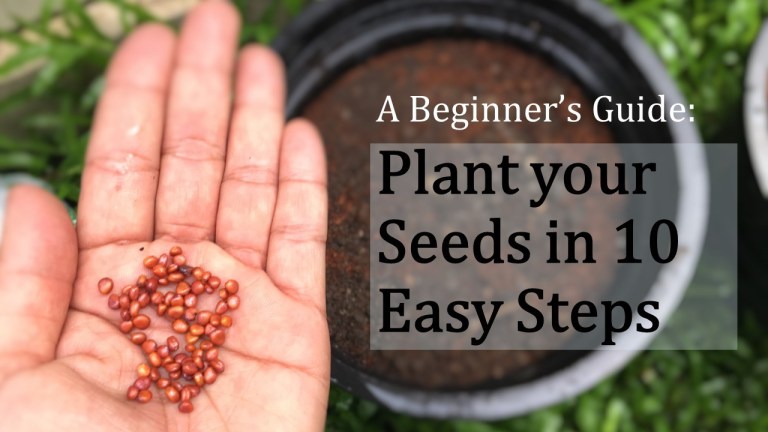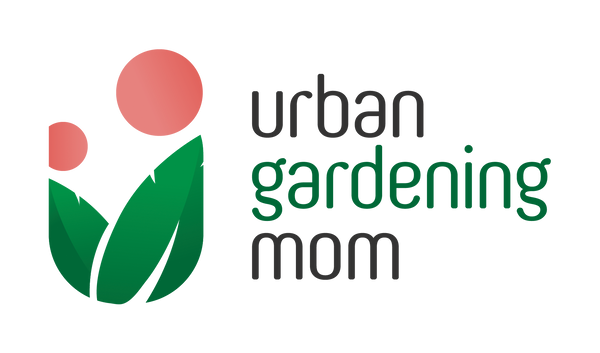
How to Start Seeds in a Seedtray: A Step-by-Step Guide
Share
Here are the steps on how to start seeds in a seed tray:
Step 1: Soak the seeds overnight to induce them to germinate faster.

Soaking softens the protective outer layer of the seed and boosts the moisture content around the seeds, which is a signal for the seed to start to germinate. Fill a container with tap water and pour in the seeds. If you have a tea strainer, you can use this to contain the seeds while soaking. If you think your tap water is highly chlorinated, let the water sit for at least two hours before putting in the seeds.
Step 2: Fill the seed tray with soil.

Fill the seed tray with soil, then tap lightly to level off the soil while scraping off the excess. Do not press down. It is important to use good quality soil. I always use a combination of compost and coco peat since compost provides the nutrients while coco peat makes the soil airy to allow the roots to spread easily. Optionally, you may add a layer of coarse sand or small rock pebbles at the bottom to help drain water faster. You can also use pumice or perlite if available, since they retain moisture longer while allowing for drainage.
Step 3: Water the soil evenly until some liquid flows out of the holes.
Check if the water is properly draining out of the holes. If you do not see some amount of water flow out of these holes, it is either soil is too compact, the holes are too small or you need to add more water. You will also notice the volume of the soil contracting a little bit as it settles in the seed tray. Wait a few minutes until most of the the excess water drains out from the bottom. It is important that the soil is moist but not soggy. If water accumulates on the surface, it is possible that the bottom part is clogged or the holes are too small. Punch more holes if needed.
Step 4: Drop the seeds over the soil.
 If you are using a compartmentalized seed tray, drop 2 seeds per compartment to increase the chance that at least 1 seed will germinate per compartment. Push the seeds down lightly but do not bury the seeds deeply.
If you are using a compartmentalized seed tray, drop 2 seeds per compartment to increase the chance that at least 1 seed will germinate per compartment. Push the seeds down lightly but do not bury the seeds deeply.
Step 5: Cover the seeds with a thin layer of soil.
 Spread a thin layer (about .5 cm) of soil on top of the seeds. Tap again lightly and scrape off excess soil but do not press down.
Spread a thin layer (about .5 cm) of soil on top of the seeds. Tap again lightly and scrape off excess soil but do not press down.
Step 6. Spray the top layer with tap water.
Using a spray bottle, moisten the top layer with water. Make sure the top soil is completely wet. If you don’t have a spray, use your hands or a large spoon to scoop water and pour it gently over the soil. Make sure the top soil is not disturbed. Tap the seed tray again to allow water to seep through.
Step 7. Label the seed tray.

This is very important especially if you are planting more than 1 variety of seeds. You may use popsicle sticks, discarded plastic utensils, or a masking tape. Plastic labels are also available commercially.
Step 8. Place the seed tray in a warm, well-lighted and sufficiently ventilated area.

The seed tray can be placed indoors or outdoors, for as long as there is ample natural light and proper ventilation. When placed outdoors, make sure the seed tray is not exposed to too much sunlight (although a little indirect sunlight will help) nor heavy rains. Most seeds germinate faster when the soil is warm (20 – 30 degrees Celsius). Depending on the type, seeds typically germinate from 2 to 15 days. The seed packet labels usually indicate the length of time expected for germination. Using a water spray, moisten the soil every 2-3 days when the soil gets dry.
Step 9. Transplant the seedlings into a bigger pot.
Wait for the true leaves to appear before transplanting into a bigger pot. The first 2 leaves are not really plant leaves but are the seed’s cotyledons. The true leaves are the second set of leaves that start to appear after the first set. As soon as the true leaves have fully grown, the seedlings are ready to be transplanted.
Step 10. Gradually expose the seedlings to sunlight.
 Their young roots are still very fragile so sudden sun exposure might shock the small seedlings. Expose the seedlings slowly to direct sunlight (maximum of 2 hours) for the first two weeks, and gradually increasing the sun exposure in the next few more weeks. To avoid overcrowding the pot, thin out the seedlings in every pot by pinching off or pulling out the weaker seedlings.
Their young roots are still very fragile so sudden sun exposure might shock the small seedlings. Expose the seedlings slowly to direct sunlight (maximum of 2 hours) for the first two weeks, and gradually increasing the sun exposure in the next few more weeks. To avoid overcrowding the pot, thin out the seedlings in every pot by pinching off or pulling out the weaker seedlings.
